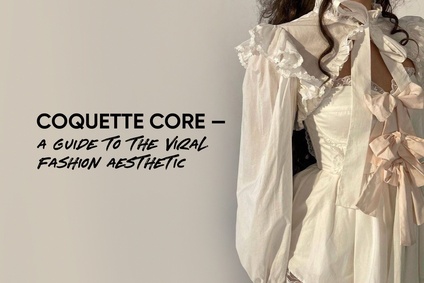On April 13, 2023, we said goodbye to the style icon and designer that gave us a mini skirt – Mary Quant. In today’s digest, you’ll learn more about her journey and what being a fashion revolutionary was like. Keep scrolling!

The mini skirt, just like many other fashion novelties, came from Great Britain in the 1960s. It was a time of changes: post-war society had just started getting used to peace, however, everybody felt that nothing could be the same anymore. That’s why this decade was truly pivotal. It was the time of youth.
The sexual revolution and the emergence of youth subcultures inevitably influenced fashion. People were craving something new, and British designer Mary Quant was the one who could address it.

In 1955, 21-year-old Mary Quant opened the Bazaar boutique on the King’s Road where she sold clothes that met the demands of the swinging London. She said that she primarily wanted to dress herself and her peers. Quant managed to set some trends loved by the young public, with the mini length being her specialty. The mini was so minimal that she actually had to create matching shorts to wear underneath and not flash the underwear.
Mary Quant shifted the approach to clothing – generally speaking, she was the one who started the “fast fashion” craze. She sold affordable clothes that were liked by everyone, from the girls with a small salary to the real-life aristocracy. For those who still couldn’t afford her garments, she issued sewing patterns.

The youth praised their fashion icon, while the older generations were stunned by the clothes that were inappropriate in their eyes. The hottest length of the women’s garments sparked heated debate. There were even attempts to break the window of Quant’s boutique. At the same time, young fashionistas protested in support of the mini skirt. Mary Quant dressed the top-list celebrities of the time like Twiggy, Bridgit Bardot, and Audrey Hepburn, and it had become easier for girls to shake off the opinions of the boring elders. In 1963, clothes by Mary Quant made their way to the USA.

Interestingly, “mini” wasn’t the original term – initially, the skirts were just called short. The skirt owes its name to the most popular car of the time, the MINI Cooper. All the progressive and active British women loved the car, including Mary Quant herself, so the designer borrowed the word for her famous creation. In 1988, she even collaborated with the car company and designed the interior for a limited edition of the car.

In general, Mary Quant’s designs signified the baby boomers’ rebellion against the traditional life standards imposed by the older generation. The mini skirt became a symbol of the feminist movement and the struggle for women’s reproductive rights.
Quant’s feminist statements had not ended with the groundbreaking mini skirt. She also created the “Bank of England” dress to draw attention to the fact that women of the 1960s were not able to get a personal bank account without a man’s approval. To make this dress, she used twill fabric usually used for men’s workwear – she was tastefully trolling the established order of things.

The designer also had a makeup line. It is widely believed that she was the one who invented waterproof mascara. It had a fun slogan, “Cry, baby. But only if you’re wearing Mary Quant new tearproof mascara.”

In Great Britain, Mary Quant is a legend. In 1966, just 11 years after she opened her Bazaar, she was awarded an OBE in recognition of her contribution to British fashion, and in 2015 she was made a Dame.
Fighting against stereotypes and outdated standards is hard but definitely worth it. At the end of the day, we all have the right to be what we want to be and to live the way we want to live. How about sewing something just for one special you? Just because :)
Trendy Vikisews sewing patterns are here.
More about famous people in the fashion world:










Здесь пока нет комментариев